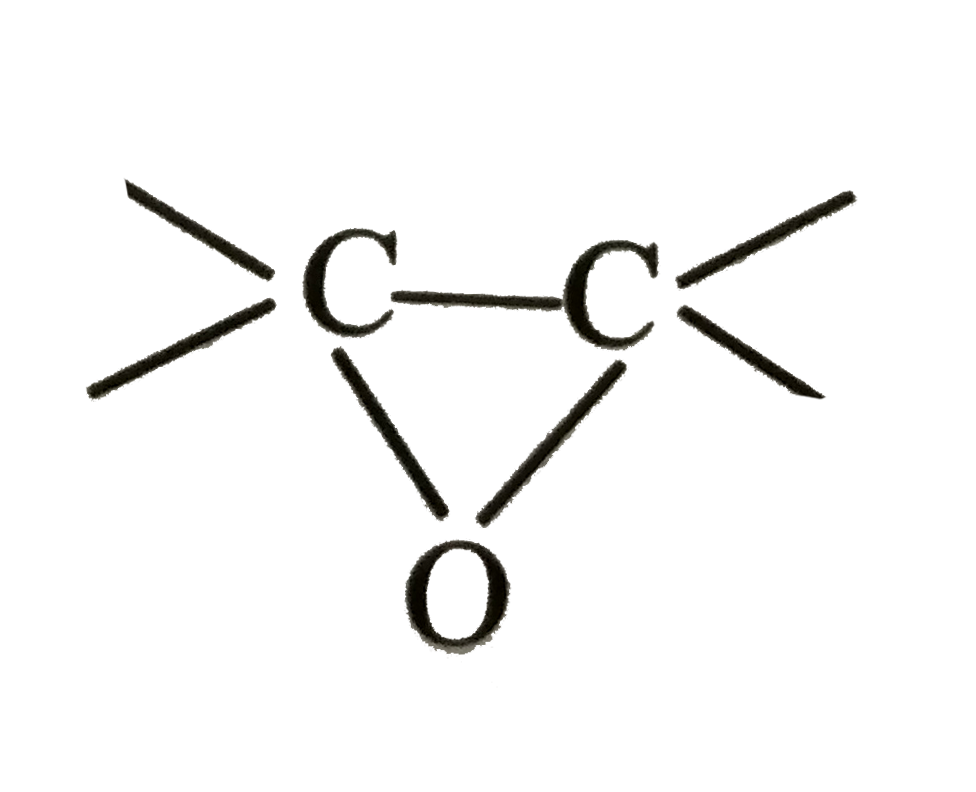Epoxides are :
unsaturated ethers
mixed ethers
cyclick ethers with 
not ethers
The correct Answer is:C
Step by step video, text & image solution for Epoxides are : by Chemistry experts to help you in doubts & scoring excellent marks in Class 12 exams.
Topper's Solved these Questions
- BOOK - OP TANDONCHAPTER - ALCOHOLS, PHENOLS AND ETHERSEXERCISE - OBJECTIVE QUESTIONS (LEVEL-B)30videos
ALCOHOLS, PHENOLS AND ETHERS
- BOOK - OP TANDONCHAPTER - ALCOHOLS, PHENOLS AND ETHERSEXERCISE - SET II25videos
ALCOHOLS, PHENOLS AND ETHERS
- BOOK - OP TANDONCHAPTER - ALCOHOLS, PHENOLS AND ETHERSEXERCISE - OBJECTIVE QUESTIONS (LEVEL-A)175videos
ALCOHOLS, PHENOLS AND ETHERS
- BOOK - OP TANDONCHAPTER - ALDEHYDES AND KETONES EXERCISE - SINGLE INTEGER ANSWER TYPE QUESTIONS10videos
ALDEHYDES AND KETONES
Similar Questions
Knowledge Check
- Question 1 - Select One
Epoxides react with Grignard reagent to form
APrimary alcoholsBSecondary alcoholsCTertiary alcoholsDAny of the three - Question 2 - Select One
Symmetrically subsituted epoxides give the same products in both the acid catalysed and base catalyzed ring opening. An unsymmetrical epoxide gives different products under acid catalysed and base catalysed conditions. Under basic contions, the alkoxide ion simply attacks the less hindered carbon atom in an SN2 displacement. Under acidic conditions, the alcohol, attacks the protonated epoxide.
_S01_402_Q01.png)
Structure II and III show that the oxtrane carbon share part of positive charge. The tertiary carbon bear a larger part of positive charge and it is more strongly electrophilic. The bond between teritiary carbon and oxygen is weaker implying a lower transition state energy for attack at the teritary carbon. Attack by the weak nucleophilic is sensitive to the strength of electrophilic is sensitive to the strength of electrophile. Center attack takes place at more electrophilic carbon which is usually the more substituted carbon because it can better support the positive charge.
What will be the products in following reactions
_S01_402_Q02.png) A
A_S01_402_O01.png) B
B_S01_402_O02.png) C
C_S01_402_O03.png) D
D_S01_402_O04.png)
- Question 3 - Select One
Symmetrically subsituted epoxides give the same products in both the acid catalysed and base catalyzed ring opening. An unsymmetrical epoxide gives different products under acid catalysed and base catalysed conditions. Under basic contions, the alkoxide ion simply attacks the less hindered carbon atom in an SN2 displacement. Under acidic conditions, the alcohol, attacks the protonated epoxide.
_S01_403_Q01.png)
Structure II and III show that the oxtrane carbon share part of positive charge. The tertiary carbon bear a larger part of positive charge and it is more strongly electrophilic. The bond between teritiary carbon and oxygen is weaker implying a lower transition state energy for attack at the teritary carbon. Attack by the weak nucleophilic is sensitive to the strength of electrophilic is sensitive to the strength of electrophile. Center attack takes place at more electrophilic carbon which is usually the more substituted carbon because it can better support the positive charge.
_S01_403_Q02.png) A
A_S01_403_O01.png) B
B_S01_403_O02.png) C
C_S01_403_O03.png) DNone of these
DNone of these
Questions based on Epoxides and Crown Ethers
View SolutionQuestions based on epoxides and crown ethers
View SolutionReaction Mechanism : grignard reagent, (reaction with epoxides, sn2 reaction on reaction with alkyl halides, reaction with alkyl cyanides
View SolutionIf a mixture containing 1-butene, cis-2-butene and trans-2-butene is treated with perbenzoic acid, how many different isomers of epoxides result?
View Solutiona. Epoxides of α,β-unsaturated carbonyl compounds can be formed by peroxy acid as well as with H2O2/OΘH. Explain the formation of epoxides in both cases.
b. Acrolein (CH2=CH−CHO) is epoxidised much more rapidly with H2O2/ΘOH than with a peroxy acid. Explain why.View Solution

